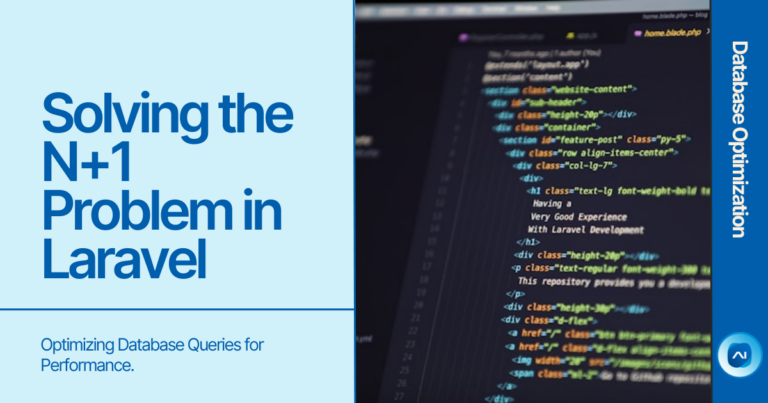GitHub Actions for easy automate code deployment.
Automating your code deployment can save a lot of time, reduce human error, and increase productivity. GitHub Actions provides a powerful platform for automating a wide variety of tasks, including building, testing, and deploying code.
In this blog post, we’ll show you how to set up automated deployments using GitHub Actions, allowing you to focus on writing great code instead of manually deploying it.
1. What is GitHub Actions?
GitHub Actions is a CI/CD (Continuous Integration/Continuous Deployment) tool that is integrated directly into GitHub. It enables you to automate workflows for testing, building, and deploying code by responding to various GitHub events, such as pushing code to a repository or creating a pull request.
GitHub Actions uses workflows, which are defined in YAML files located in the .github/workflows directory of your repository. These workflows describe the automated processes that GitHub will run based on triggers like push or pull_request events.
2. Benefits of Automated Deployment
Automating deployments using GitHub Actions offers several benefits:
- Speed: Automations execute code deployments faster than manual processes.
- Consistency: Eliminates the risk of human error and ensures that the deployment process is the same every time.
- Scalability: Automation scales easily across multiple environments (staging, production, etc.).
- Efficiency: You can automate testing and security checks as part of the deployment pipeline.
- Collaboration: Team members can easily collaborate without needing to learn complex deployment processes.
3. Set Up a Basic GitHub Actions Workflow
Let’s create a basic GitHub Actions workflow to automatically deploy your code when changes are pushed to the main branch.
Step 1: Create a Workflow File
Create a file named deploy.yml inside the .github/workflows/ directory of your repository.
name: Deploy to Production
on:
push:
branches:
- main
jobs:
deploy:
runs-on: ubuntu-latest
steps:
- name: Checkout code
uses: actions/checkout@v3
- name: Set up Node.js (or other language)
uses: actions/setup-node@v3
with:
node-version: '16'
- name: Install dependencies
run: npm install
- name: Run build
run: npm run build
- name: Deploy to Production
env:
DEPLOYMENT_KEY: ${{ secrets.DEPLOYMENT_KEY }}
run: |
scp -r ./dist/ user@server:/path/to/deploymentThis workflow does the following:
- Triggers on Push: It runs every time you push code to the
mainbranch. - Checks Out the Code: The
actions/checkoutstep clones your repository into the workflow. - Sets Up Node.js: It installs Node.js for the build process (you can replace this with your language/runtime).
- Installs Dependencies: Runs
npm installto set up the project’s dependencies. - Builds the Code: Runs a build process defined in your
package.json. - Deploys to Production: This step uses
scpto copy the build files to your production server. You can customize this to use any deployment method you prefer (e.g., rsync, SSH, FTP).
Step 2: Commit and Push the Workflow
Once you’ve created the workflow file, commit and push it to your GitHub repository. GitHub Actions will automatically trigger when code is pushed to the main branch.
git add .github/workflows/deploy.yml
git commit -m "Add GitHub Actions workflow for automatic deployment"
git push origin main4. Configure Secrets for Deployment
Sensitive information, such as deployment keys, passwords, or API tokens, should never be hard-coded into your workflow files. Instead, GitHub provides a secure way to store these secrets.
Step 1: Add Secrets in GitHub
- Go to your repository on GitHub.
- Click on the “Settings” tab.
- Select “Secrets and variables” > “Actions” under the “Security” section.
- Click “New repository secret” and add your deployment key, API token, or any other sensitive data.
For example, add a secret named DEPLOYMENT_KEY and paste your SSH key or other deployment credentials into the value field.
Step 2: Use Secrets in Workflow
In the workflow file, access secrets using the ${{ secrets.<SECRET_NAME> }} syntax, as shown in the Deploy to Production step of the previous example.
5. Deploying to Different Environments
You may want to deploy your code to different environments, such as staging, testing, or production, depending on the branch or context.
Branch-Specific Deployments
You can set up different workflows for different branches. For example, if you want to deploy to a staging environment when code is pushed to the staging branch, modify your workflow like this:
on:
push:
branches:
- stagingThen change the deployment step to point to your staging environment server.
Example: Environment-Specific Steps
jobs:
deploy:
runs-on: ubuntu-latest
strategy:
matrix:
environment: [staging, production]
steps:
- name: Checkout code
uses: actions/checkout@v3
- name: Deploy to ${{ matrix.environment }}
run: |
if [ "${{ matrix.environment }}" == "staging" ]; then
echo "Deploying to staging..."
# Add your staging deployment commands here
else
echo "Deploying to production..."
# Add your production deployment commands here
fiThis setup uses a strategy matrix to deploy to multiple environments based on the conditions you define.
6. Best Practices for Automated Deployments
Here are some best practices to consider when automating your deployments with GitHub Actions:
- Run Tests Before Deploying: Always run tests and ensure that your code passes all checks before deploying it to any environment.yamlCopy code
- name: Run tests run: npm test - Use Encrypted Secrets: Store sensitive information, such as API tokens and SSH keys, securely in GitHub Secrets.
- Deploy in Stages: Start by deploying to a staging environment, then proceed to production after successful testing. This minimizes the risk of deploying untested code.
- Monitor and Rollback: Implement rollback mechanisms to revert to a previous version in case the deployment fails or introduces bugs.
- Limit Push Deployments: Use branch protection rules or manual approval steps for deploying to critical environments like production.
Conclusion
GitHub Actions makes automating code deployment easy and powerful. With a simple YAML configuration file, you can automate your deployment process and integrate it seamlessly into your existing development workflow. By following the steps in this guide, you’ll be able to set up continuous deployment for your applications, freeing up time to focus on building and refining your code.






